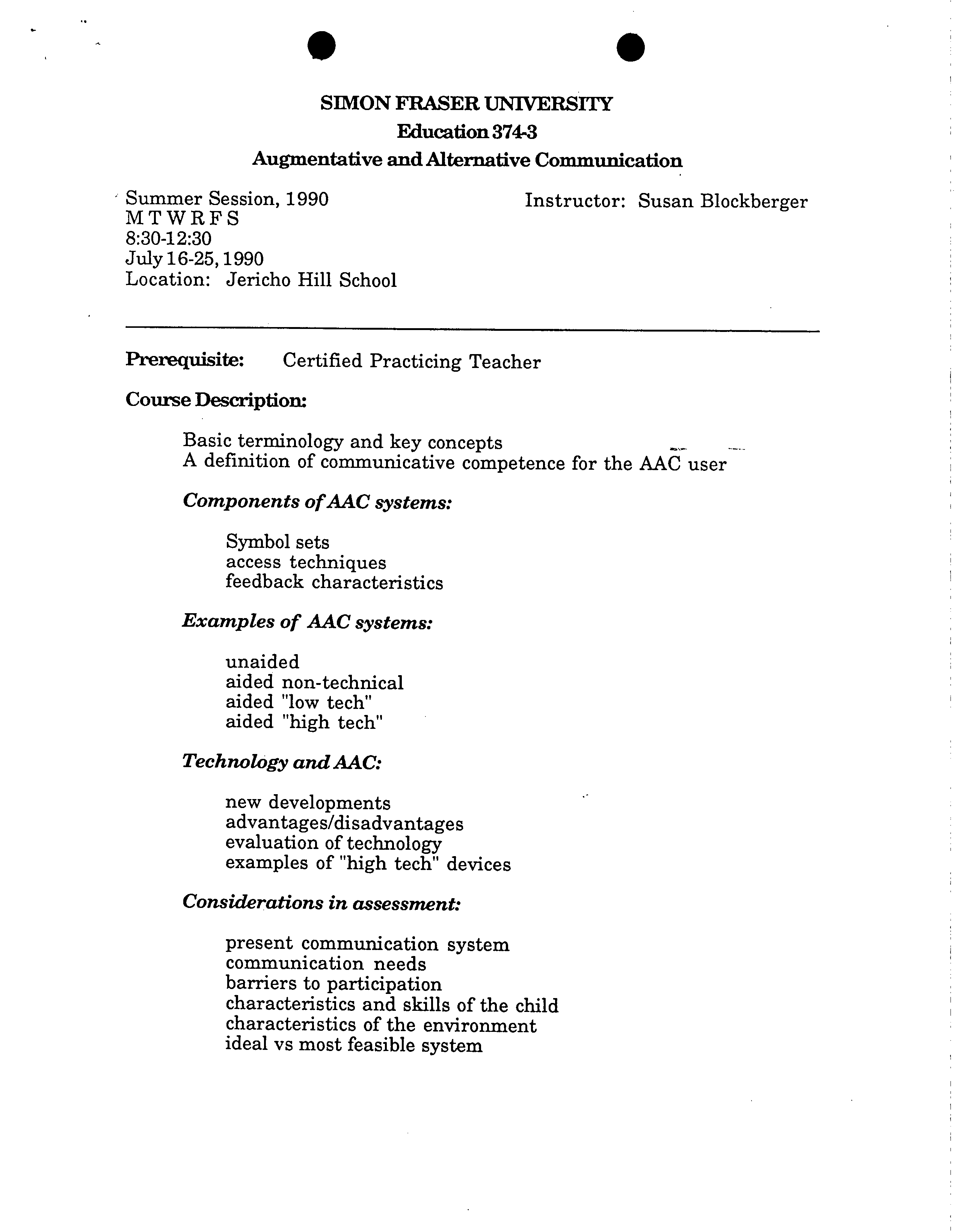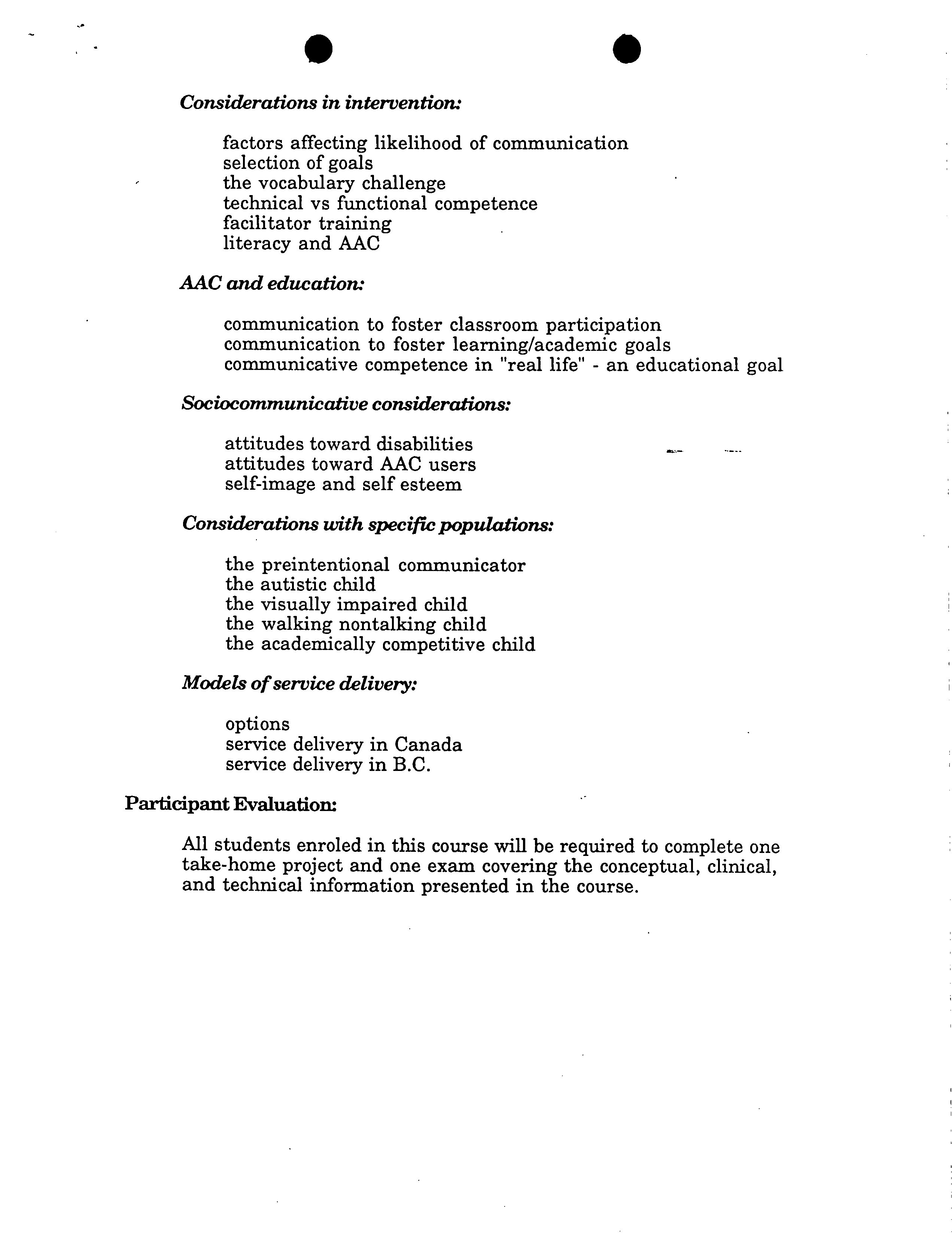.
?
.
SIMON FRASER UNIVERSITY
?
Education 3743
?
Augmentative and Alternative Communication
Summer Session, 1990
MTWRFS
8:30-12:30
July 16-25,1990
Location: Jericho Hill School
Instructor: Susan Blockberger
Prerequisite: ?
Certified Practicing Teacher
Course Description
Basic terminology and key concepts
A definition of communicative competence for the AAC user
Components of AAC systems:
Symbol sets
access techniques
feedback characteristics
Examples of AAC systems:
unaided
aided non-technical
aided "low tech"
aided "high tech"
Technology and AAC:
new developments
advantages/disadvantages
evaluation of technology
examples of "high tech" devices
Considerations in assessment:
present communication system
communication needs
barriers to participation
characteristics and skills of the child
characteristics of the environment
ideal vs most feasible system
. ? .
Considerations in interventiom
factors affecting likelihood of communication
selection of goals
the vocabulary challenge
technical vs functional competence
facilitator training
literacy and AAC
AAC
and educatiow
communication to foster classroom participation
communication to foster learning/academic goals
communicative competence in "real life" - an educational goal
Sociocommunkative considerations:
attitudes toward disabilities
attitudes toward AAC users
self-image and self
esteem
Considerations with specific populations:
the preintentional communicator
the autistic child
the visually impaired child
the walking nontalking child
the academically competitive child
MOdels of service delivery:
options
service delivery in Canada
service delivery in B.C.
Participant Evaluation
All students enroled in this course will be required to complete one
take-home project and one exam covering the conceptual, clinical,
and technical information presented in the course.


